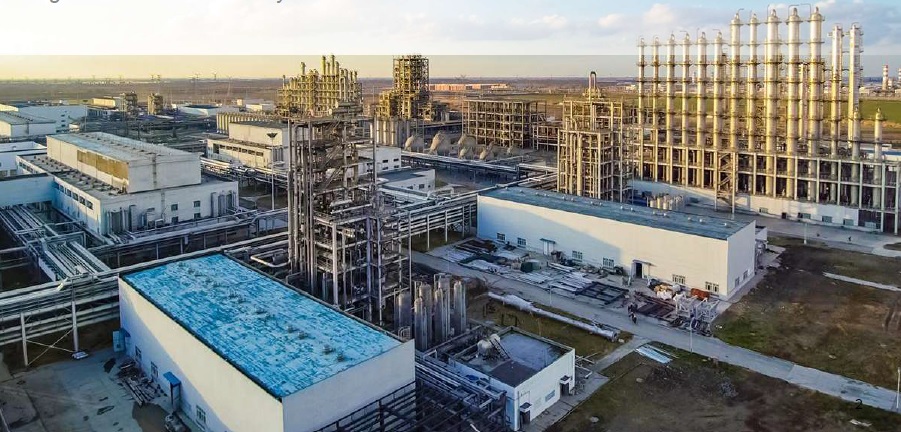 (Courtesy: Ricardo Gomez Angel/Unsplash)
(Courtesy: Ricardo Gomez Angel/Unsplash)by Kathiann M. Kowalski, Energy News Network
Ohio Gov. Mike DeWine’s administration is seeking $189 million in federal Inflation Reduction Act funding to help implement the state’s first climate action plan.
The proposal, submitted to the U.S. Environmental Protection Agency in late March, would establish a statewide fund to help electrify government fleets, retrofit public buildings, and install solar generation on city, county and state properties.
State agencies and local governments would be invited to apply for grants covering 100% of project costs in areas identified as local-income and disadvantaged. Elsewhere, grants would cover half of project costs, with the rest eligible for a subsidized, revolving loan program.
The Ohio Environmental Protection Agency and the Ohio Air Quality Development Authority chose to focus on direct, government investments because it’s an approach they think can achieve quick and substantial impacts without needing to cause widespread behavior changes in a state where public opinion is divided on policy actions to address climate change.
“Governments really control significant assets in terms of fleets and building stock across Ohio,” said Brooke White, an air quality evaluation and planning supervisor with the Ohio EPA.
Ohio is among 45 states and nearly 70 metropolitan areas competing for a share of up to $4.6 billion in federal funding as part of the U.S. EPA’s Climate Pollution Reduction Grant program, which has already distributed almost half a billion dollars to participating states and metro areas to develop or refine climate action plans.
That initial round of funding prompted Ohio to produce its first statewide climate action plan. The Priority Resilience Plan identified transportation electrification as the highest priority strategy for cutting emissions, followed by renewable electricity generation and building energy efficiency.
Electric power generation is Ohio’s largest greenhouse gas emissions sector, emitting 28% of the state’s total greenhouse gas emissions, according to the plan. Transportation comes in second at 26%. And direct fossil fuel emissions from buildings account for one-fourth of the total, although almost all electricity produced in the state winds up being used in buildings.
The plan also notes various measures that can help cut emissions from different sources, with transportation and buildings being a major focus. A more comprehensive plan will be due next year.
“The plan is the first statewide step for Ohio to reduce and mitigate the impacts of climate change,” said Nolan Rutschilling, managing director of energy policy for the Ohio Environmental Council.
States that submitted climate plans were invited to compete for implementation grants. Criteria include substantial reductions of greenhouse gas emissions and community benefits, particularly for low-income and disadvantaged communities. Policies and programs should also complement other funding sources. And they should be appropriate for scaling up across multiple jurisdictions.
Under the proposal, state agencies and local governments could apply for money to purchase electric vehicles or install or repair charging stations. Building projects could include things like adding rooftop solar or upgrading lighting or HVAC systems. Efficiency upgrades are “not the hottest topic, but they are sort of the biggest bang for your buck,” White said.
The state’s application estimates the transportation projects would avoid the equivalent of more than 4 million metric tons of carbon dioxide emissions by 2030. From 2025 through 2050, cumulative emissions reductions would exceed 32 million metric tons. The program also would provide technical assistance to agencies, counties and cities.
The grant program would direct 60% of its funding to low-income and disadvantaged communities. Other benefits for those areas would include improvements in air quality, as well as added jobs in fields related to electric vehicles, energy efficiency and renewable energy.
“We are not planning just environmental benefits. We are also creating socioeconomic benefits and building a workforce for market transformation,” said Laura Quiceno Waltero, an environmental specialist with the Ohio Environmental Protection Agency, speaking at the Ohio State Bar Association’s Environmental Law Institute last month in Columbus.
Another expected benefit: Lower energy bills can free up funds to provide better services overall for communities, “which is where we want their dollars going,” White said.
A 2022 report by Scioto Analysis for the Ohio Environmental Council and Power a Clean Future Ohio estimated climate change impacts would increase budget needs for the state’s local governments between $1.8 and $5.9 billion per year by midcentury.
Ohio’s emphasis on transportation and buildings is in line with other states’ priority climate action plans, according to an April 11 analysis from RMI, ClimateXChange and the Evergreen Collaborative.
The 47 plans submitted by states, Puerto Rico and the District of Columbia included descriptions of 186 measures to address transportation emissions. Colorado and North Dakota were the only states that did not highlight transportation, the analysis found. And all 47 plans had at least one measure to reduce greenhouse gas emissions from buildings. Plans generally emphasized voluntary actions, with few including possible regulatory measures.
Ohio’s proposal has received enthusiastic support from environmental advocates in the state.
“We all need to be working hand-in-hand to bring more federal investment to our state,” said Crystal Davis, the senior Midwest regional director for the National Parks Conservation Association. She spoke on a panel about environmental, health and legal justice at the Ohio State Bar Association program.
The proposal for building efficiency is somewhat limited by its focus on public buildings, noted Rutschilling, of the Ohio Environmental Council. Yet he applauded the focus on benefits for low-income and disadvantaged communities, which will bear the brunt of climate change impacts. “We also appreciate the workforce development components, particularly the focus on job creation in Appalachia,” he said.
Power a Clean Future Ohio has already been working with local governments in Ohio on projects to help them cut greenhouse gas emissions. So far, 50 local governments are members. Ohio’s proposed program “could be transformative if done in a transparent and bottom-up approach” that lets communities set priorities based on their needs, said Joe Flarida, executive director for the organization.
“Resilience funding is climate funding, and it’s also smart city planning,” Flarida said. Yet, he added, “local governments are just the start of this work. It’s the tip of the iceberg.”
The U.S. EPA is expected to announce awards in July.







